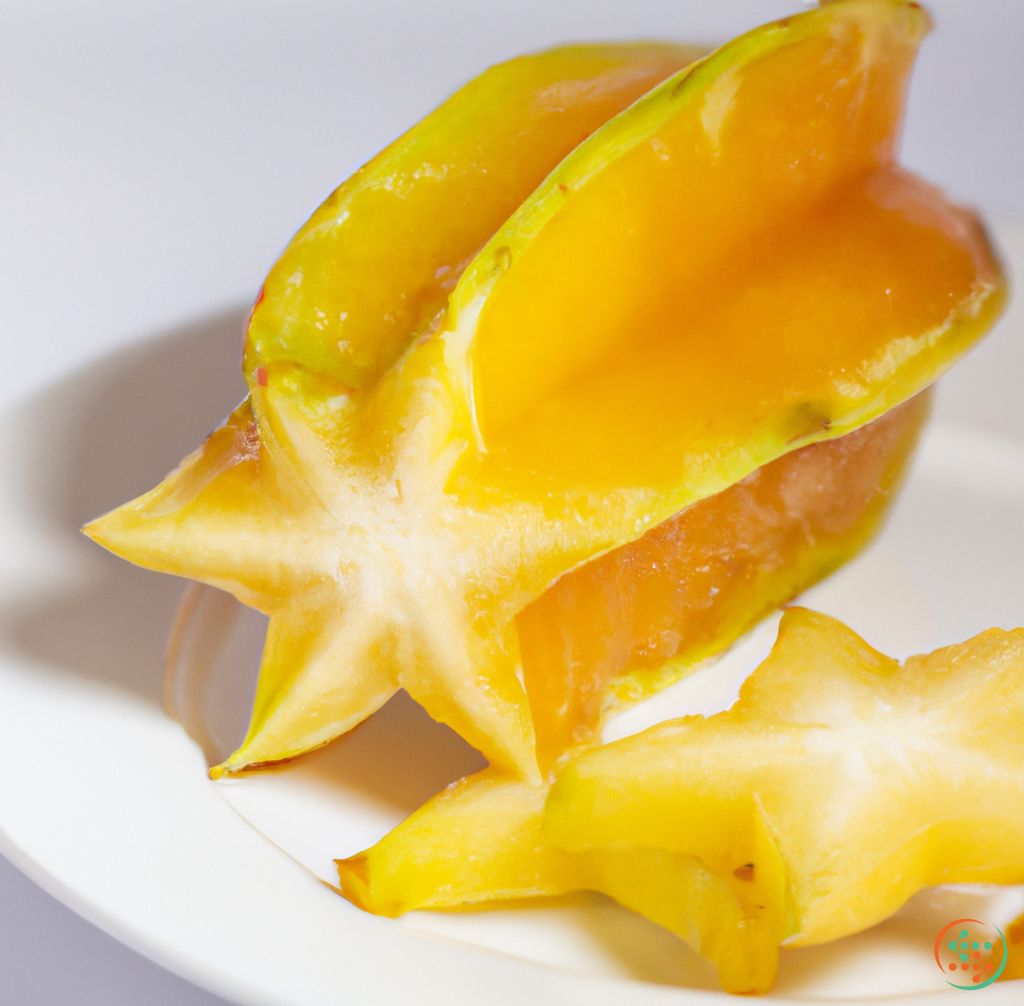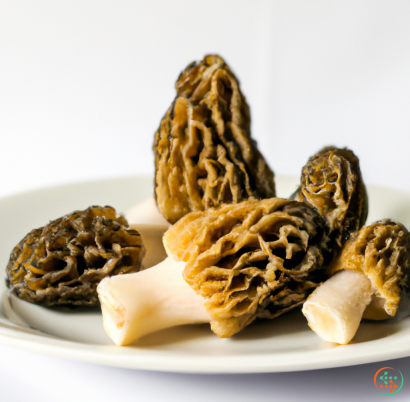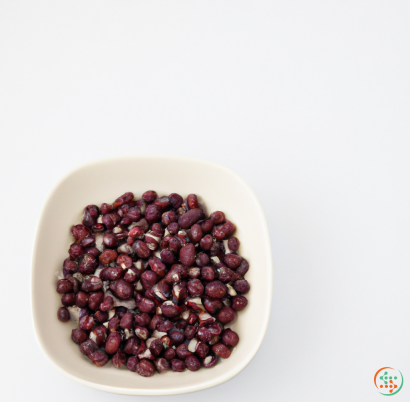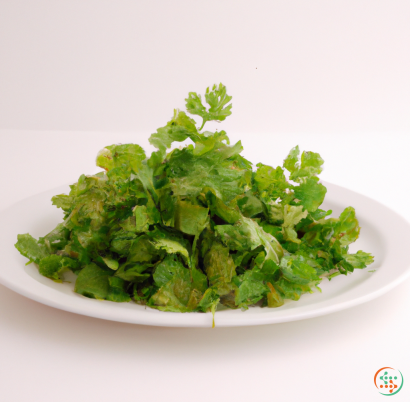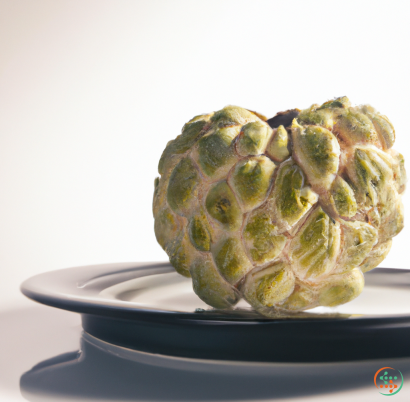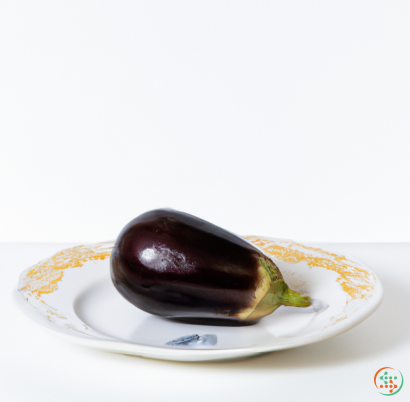Carambola
What is a Carambola?
A carambola, also known as a starfruit, is an oblong shaped tropical fruit with a green waxy skin and yellow speckled flesh. Its distinctive star shape gives it its name and has made it a popular choice as an ornamental plant as well as offering a healthy snack option. Although it is native to Southeast Asia, you can now find carambolas in regular supermarkets and farmers’ markets in the United States, Mexico and other countries around the world.
Carambolas are delightfully sweet to the taste with a slightly acidic tang. The texture of the flesh is juicy and firm. It is a perfect way to add a hint of exotic flavor to salads and desserts and makes an attractive addition to meals.
The carambola is packed full of nutrients and offers a host of health benefits, thanks to its rich source of vitamins B, C and A, fiber and antioxidants. It is loaded with minerals such as phosphorous, magnesium, calcium and potassium that aid the absorption of these beneficial nutrients. As an anti-inflammatory, the fruit helps reduce low level inflammation in the body, which can reduce or prevent a range of chronic diseases.
As a natural source of dietary fiber, carambolas help to maintain healthy digestive function, provide bulk to food and ensure a healthy intestinal tract. It acts as a natural laxative and can help to reduce your risk of developing certain types of cancer as well as helping to control cholesterol.
With its low calories, carambolas make a great snack for weight watchers. The small size of the fruit means you get all the taste without the hefty calorie count. It is a nutritious and natural way to get your daily dose of essential vitamins, minerals and other essential nutrients.
When selecting carambolas, look for fruits that are firm, without any blemishes on the skin. The skin should be a vibrant yellow-green in color and the flesh should be a light yellow. Over ripe fruits will give off a pungent odor and should be discarded.
Carambolas can be stored in a cool, dark place for up to two weeks. Once ripe, the skin will turn completely yellow and can be consumed with the skin on or peeled off and chopped for use in salads, tarts or batters for pancakes and waffles.
To get the most nutrition from your carambolas, try roasting them in the oven. Bake at 350 degrees Fahrenheit until the skin is lightly browned and the flesh is tender. Roasted carambolas make a great side dish or you can mash them up to make a delicious jam or topping on toast or muffins.
Another great way to enjoy the taste of carambolas is by blending them into smoothies or shakes. The addition of carambolas adds a refreshing twist to a regular smoothie recipe.
Carambolas have earned a well-deserved spot on the list of exotic and health-promoting fruits. This low calorie and low carbohydrate fruit is a great addition to any diet and provides a wealth of benefits in terms of nutrition, health and flavor. Make sure to include carambolas when your next grocery shop and enjoy all the delicious benefits of this tropical star!
The Journey of a Carambola from Tree to Dinner Plate
People often wonder how the sweet and juicy Carambola, also known as starfruit, makes its way from the tropical landscape, to their dinner plate. On that path, it passes through various steps, from growth and cultivation, to harvesting, processing, packaging and shipping. This article will take a detailed look at the whole process, to give you a better insight into the journey of this tongue-tickling tropical treasure.
Growth and Cultivation
Carambolas are grown on a type of evergreen tree found in the tropics, known as Averrhoa carambola, where they originated. The tree grows best in regions ranging between 24-30 degrees Celsius, on average. It is important to note that Carambolas thrive in warmer climates, because they are susceptible to cold weather and frost, which can damage or even kill the tree. The tree is early to bear fruit, often producing it first harvest within a few months of planting.
Carambolas need warm temperatures, high humidity and abundant rainfall, so many of the countries where they are produced offer suitable growing environments. Gardens and orchards in countries such as China, Indonesia, Malaysia, India, South Africa and Thailand, produce several varieties of starfruit that are widely available in the international market.
When Carambolas are ready for harvesting, they should be picked from the tree when they are beginning to yellow and the skin should not be wrinkled. They should have a slightly waxy feel, which is a sign of freshness, and they should be firm yet pliable. Dropping the starfruit or cutting it off the tree is the only way to properly harvest them; using a pull method might damage it, leading to spoilage later on.
Harvesting and Processing
Once the Carambolas are harvested, they must move through several processes to prepare them for sale in supermarkets. First, the fruit is washed in water with an appropriate acidifier to reduce microbial risk. This is important because fresh produce can be easily contaminated with bacteria, some of which can be dangerous if consumed. Secondly, the Carambolas are dried, either mechanically or naturally, to stop their growth and ripening process, thus preserving them for longer.
In mechanical drying, the fruit is placed in a heated chamber and hot air is blown through to evaporate the water from them. On the other hand, in natural drying, the Carambolas are allowed to sit in a ventilated area, protected from direct sunlight and dust. In both cases, the aim is to reduce their moisture content without losing any of their flavor and nutrition.
Once the Carambolas are dry, they are further processed, depending on the purpose they are being used for. For instance, if they are intended to be consumed fresh, the skin is then cut, either manually or mechanically, to form a star shape that is characteristic of Carambolas. Alternatively, if they are meant to be processed or canned, they are crushed and their juice is extracted. The juice can then be concentrated, made into jams, jellies, purees, ice cream, and more.
Packaging and Shipping
The next step for the Carambolas is packaging and shipping. The Carambolas are usually packed in corrugated boxes, usually lined with a hybrid wax, which helps them to remain fresh for a longer period. The boxes come in different sizes, depending on the purpose for which they are being sold and shipped, and how many will be sent at a time.
Once the Carambolas are packed, they are ready to be shipped to wherever they must be sold and/or consumed. To ensure their safe arrival, they are typically transported by air and refrigerated planes, which keep the temperature optimal and prevent any loss of flavor or nutrition. The planes also kill any potential bacteria or other microorganisms that could damage the fruit. The Carambolas can also be shipped by sea, but air freight is preferable due to shorter transit times and the lower cost.
From Tree to Dinner Plate
Finally, after having endured the entire journey, Carambolas make their way onto the dinner plate. They can be eaten raw, cooked, baked or even pickled. Their sweet-tart flavor and golden hue make them an ideal ingredient for many dishes, from salads and sauces, to soups and pies. They can even be made into refreshing fruits juices and smoothies.
To sum up, Carambolas take an interesting journey from the tropical landscape, to the dinner plate. Due to their sensitivity to cold weather, they must be grown in proper climates, harvested carefully and packaged with great care. The journey is completed with a tasty ride on the plate, only if the Carambolas' various stages of development are done correctly.
| Vitamin A | 0.003 mg | |
| Beta-Carotene | 0.025 mg | |
| Alpha-Carotene | 0.024 mg | |
| Vitamin E | 0.15 mg | |
| Vitamin C | 0.0344 grams | |
| Vitamin B1 | 0.01 mg | |
| Vitamin B2 | 0.02 mg | |
| Vitamin B3 | 0.37 mg | |
| Vitamin B4 | 0.0076 grams | |
| Vitamin B5 | 0.39 mg | |
| Vitamin B6 | 0.02 mg | |
| Vitamin B9 | 0.012 mg |
| Calcium | 0.003 grams |
Daily Value 1.3 g
|
| Iron | 0.08 mg |
Daily Value 0.018 g
|
| Magnesium | 0.01 grams |
Daily Value 0.4 g
|
| Phosphorus | 0.012 grams |
Daily Value 1.25 g
|
| Potassium | 0.133 grams |
Daily Value 4.7 g
|
| Sodium | 0.002 grams |
Daily Value 2.3 g
|
| Zinc | 0.12 mg |
Daily Value 0.011 g
|
| Copper | 0.14 mg |
Daily Value 0.9 mg
|
| Manganese | 0.04 mg |
Daily Value 0.0023 g
|
| Selenium | 0.6 ug |
Daily Value 0.055 mg
|
| Tryptophan | 0.008 grams | |
| Threonine | 0.044 grams | |
| Isoleucine | 0.044 grams | |
| Leucine | 0.077 grams | |
| Lysine | 0.077 grams | |
| Methionine | 0.021 grams | |
| Phenylalanine | 0.037 grams | |
| Tyrosine | 0.044 grams | |
| Valine | 0.05 grams | |
| Arginine | 0.021 grams | |
| Histidine | 0.008 grams | |
| Alanine | 0.071 grams | |
| Aspartic Acid | 0.098 grams | |
| Glutamic Acid | 0.148 grams | |
| Glycine | 0.05 grams | |
| Proline | 0.05 grams | |
| Serine | 0.083 grams |
| Total Sugars | 4 grams |
per 100g
|
| Palmitic acid (16:0) | 0.01 grams |
|
| Stearic acid (18:0) | 0.01 grams |
|
| Total Saturated fatty acids: | 0.02 g | |
| Oleic acid (18:1) | 0.03 grams |
|
| Total Monounsaturated fatty acids: | 0.03 g | |
| Linolenic acid (18:3) | 0.03 grams |
|
| Linoleic acid (18:2) | 0.16 grams |
|
| Total Polyunsaturated fatty acids: | 0.19 g | |
